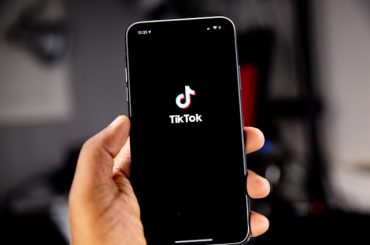Before we dive deep into the SWOT analysis, let’s get the business overview of CVS. CVS Health Corporation (CVS) is an American integrated healthcare services company with diverse offerings. Its primary focus is providing healthcare solutions to individuals, healthcare providers, and communities.
CVS has a vast network of retail pharmacies, walk-in medical clinics, pharmacy benefits management (PBM) services, and healthcare technology solutions. As of 2021, CVS operates through three primary business segments:
- Retail/LTC (Long-Term Care) Segment: This segment consists of CVS Pharmacy, a nationwide retail pharmacy chain with thousands of locations across the United States. It offers prescription and over-the-counter medications, health and beauty products, general merchandise, and services like immunizations and patient counseling. The retail segment also includes Long-Term Care (LTC) pharmacy services, which serve patients in skilled nursing facilities, assisted living facilities, and other long-term care settings.
- Pharmacy Services Segment: This segment includes CVS Caremark, a leading pharmacy benefits management (PBM) service provider in the U.S. PBMs act as intermediaries between pharmacies, drug manufacturers, and health plan sponsors to negotiate drug prices, manage prescription drug benefit programs, and process claims. CVS Caremark offers various services such as formulary management, mail-order pharmacy services, specialty pharmacy services, and Medicare Part D services.
- Health Care Benefits Segment: This segment primarily consists of Aetna, a major health insurance provider in the United States. Acquired by CVS in 2018, Aetna offers a wide range of healthcare insurance products and services, such as medical, pharmacy, dental, and behavioral health plans. These services are provided to employers, government-sponsored plans, and individuals.
CVS Health’s mission is to help people on their path to better health. The company leverages its diverse range of assets and capabilities to create integrated healthcare solutions that address the changing healthcare landscape needs.
- Total revenues increased to $322.5 billion, up 10.4% compared to the prior year.
- GAAP diluted EPS of $3.14 and Adjusted EPS of $8.69
- Generated cash flow from operations of $16.2 billion
Here is the SWOT analysis for CVS
A SWOT analysis is a strategic planning tool used to evaluate the Strengths, Weaknesses, Opportunities, and Threats of a business, project, or individual. It involves identifying the internal and external factors that can affect a venture’s success or failure and analyzing them to develop a strategic plan. In this article, we do a SWOT Analysis of CVS.
SWOT Analysis: Meaning, Importance, and Examples
Strengths
- Extensive retail network: With thousands of retail locations across the U.S., CVS Pharmacy enjoys a wide geographic reach and strong market presence. This extensive network enables the company to serve a large customer base and drive sales, providing convenience and accessibility to customers.
- Vertical integration: The acquisition of Aetna in 2018 marked a significant step towards vertical integration, allowing CVS to combine its retail, pharmacy services, and health insurance offerings. This integration enables the company to offer comprehensive and coordinated healthcare solutions, improve patient outcomes, and reduce overall healthcare costs.
- Diversified business model: CVS operates in multiple segments of the healthcare industry, including retail pharmacies, pharmacy benefit management, and health insurance. This diversified business model allows the company to mitigate risks and capitalize on growth opportunities across the healthcare spectrum.
- Strong brand recognition: CVS enjoys strong brand recognition, with a reputation for quality and reliability. This has been built over the years through consistent performance, customer service, and a focus on patient care.
- In-store clinics: CVS operates MinuteClinic, a chain of walk-in medical clinics located within its retail pharmacies. These clinics offer convenient and accessible healthcare services, including vaccinations, routine screenings, and treatment for minor illnesses and injuries. This adds value to the CVS brand and drives foot traffic to its retail locations.
- Digital and technological initiatives: CVS is committed to investing in digital health technologies and leveraging data analytics to improve patient care, streamline operations, and enhance customer experiences. These initiatives help the company stay competitive in an evolving healthcare landscape.
- Strong supply chain management: CVS has robust supply chain management systems, enabling the company to efficiently source and distribute products, ensuring a seamless flow of goods and services.
- Strategic partnerships and collaborations: CVS has formed strategic partnerships and alliances with various stakeholders in the healthcare industry, such as drug manufacturers, hospitals, and technology companies. These collaborations help the company drive innovation, expand its product and service offerings, and enhance its competitive advantage.
Weaknesses
- Dependence on the U.S. market: CVS primarily operates within the United States, making it susceptible to fluctuations in the domestic economy and changes in regulations or policies. The company’s lack of significant international presence limits its ability to diversify risks associated with economic or regulatory shifts in the U.S.
- Reimbursement pressures: Like other healthcare providers, CVS faces constant pressure from government and private payers to reduce healthcare costs. This can lead to decreased service reimbursement rates, which may negatively impact the company’s profitability.
- Intense competition: The healthcare industry is highly competitive, with CVS facing strong rivals in each of its business segments. Competitors include large retail chains such as Walgreens Boots Alliance and Walmart, as well as other PBMs and health insurers. This intense competition can pressure prices, profit margins, and market share.
- Regulatory risks: CVS operates in a heavily regulated industry, and the company must comply with a complex set of federal, state, and local regulations. Changes in regulations, such as drug pricing policies or healthcare reforms, can significantly impact the company’s operations and financial performance.
- Integration challenges: The acquisition of Aetna marked a significant step toward vertical integration; however, successfully integrating the two organizations’ operations, cultures, and systems can be a complex and challenging process. Failure to incorporate effectively could limit the benefits of the acquisition and negatively impact the company’s performance.
- Data security and privacy concerns: CVS handles sensitive customer and patient data as a healthcare company. The company faces the ongoing risk of data breaches, which can lead to reputational damage, loss of customer trust, and potential legal liabilities.
- Employee relations: With a large workforce, CVS must manage employee relations effectively to maintain productivity and prevent labor disputes. The company has faced lawsuits related to wage and labor practices, which can harm its reputation and financial performance.
Opportunities
- Expansion into new markets: CVS can explore expanding its retail pharmacy and healthcare services into new domestic or international markets, which would help diversify its revenue streams and reduce dependence on the U.S. market.
- Growing demand for healthcare services: The aging population and increasing prevalence of chronic diseases in the United States create a growing demand for healthcare services. CVS can capitalize on this trend by expanding its preventive care, telemedicine, and home healthcare services offerings.
- Further integration of services: CVS can further integrate its retail, pharmacy benefit management, and health insurance services to create more comprehensive and seamless healthcare solutions for its customers. This could result in improved patient outcomes, increased customer loyalty, and cost savings for the company.
- Digital health and telemedicine: CVS can continue to invest in digital health initiatives, such as mobile applications, telemedicine, and remote patient monitoring, to enhance patient care, improve access to services, and streamline operations. These technologies can help the company stay competitive in a rapidly evolving healthcare landscape.
- Partnerships and acquisitions: CVS can pursue strategic partnerships, alliances, or acquisitions with other healthcare providers, technology companies, or retail businesses to expand its service offerings, enhance its capabilities, and gain a competitive edge.
- Personalized medicine and precision healthcare: CVS can explore opportunities in personalized medicine and precision healthcare by leveraging data analytics, genomics, and other advanced technologies. This can help the company provide more targeted and effective treatments, improving patient outcomes and customer satisfaction.
- Expansion of in-store clinics: CVS can continue to expand its network of MinuteClinic walk-in medical clinics, offering a more comprehensive range of services and attracting more customers to its retail locations. This could drive revenue growth and further strengthen the company’s healthcare service offerings.
- Focus on wellness and preventive care: CVS can expand its focus on wellness and preventive care services, such as health screenings, vaccinations, and lifestyle management programs. This can help the company tap into the growing demand for preventive healthcare and improve public health.
Threats
- Regulatory changes: CVS operates in a heavily regulated industry, and changes in regulations, such as drug pricing policies, healthcare reforms, or privacy laws, can have a significant impact on the company’s operations and financial performance. New regulations may increase compliance costs or limit the company’s ability to provide certain services or products.
- Intense competition: The healthcare industry is highly competitive, with CVS facing strong rivals in each of its business segments. Competitors include large retail chains such as Walgreens Boots Alliance and Walmart, as well as other PBMs and health insurers. Increased competition can pressure prices, profit margins, and market share.
- Reimbursement pressures: Like other healthcare providers, CVS faces constant pressure from government and private payers to reduce healthcare costs. This can lead to decreased service reimbursement rates, which may negatively impact the company’s profitability.
- Technological disruption: The healthcare industry is rapidly evolving due to technological advancements, and CVS must continually innovate and adapt to stay competitive. Failure to embrace new technologies or adapt to changing customer expectations could result in the company losing market share to more innovative competitors.
- Data security and privacy concerns: CVS handles sensitive customer and patient data as a healthcare company. The company faces the ongoing risk of data breaches, which can lead to reputational damage, loss of customer trust, and potential legal liabilities.
- Economic fluctuations: Economic downturns or uncertainty can affect consumer spending on healthcare products and services, impacting CVS’s revenues and profitability. Additionally, fluctuations in drug prices or supply chain disruptions can also adversely affect the company’s financial performance.
- Shifts in consumer behavior: Changes in consumer preferences and behavior, such as an increased focus on wellness and preventive care, can affect the demand for CVS’s products and services. The company must adapt to these shifts to maintain its market position and meet customer needs.
- Potential legal liabilities: CVS may face legal liabilities due to various issues, such as product recalls, labor disputes, or alleged violations of regulations. Such legal challenges can result in financial penalties, reputational damage, and operational disruptions.









